Canada AM: RICHARD’S NAUGHTY AND NICE LIST: THE BEST & WORST MOVIES OF 2014
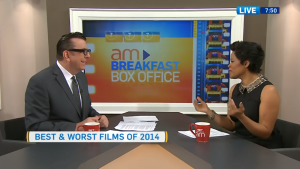 Richard and “Canada AM” host Marci Ien have a look at the Best and Worst movies of 2014. Watch the whole thing HERE!
Richard and “Canada AM” host Marci Ien have a look at the Best and Worst movies of 2014. Watch the whole thing HERE!
 Richard and “Canada AM” host Marci Ien have a look at the Best and Worst movies of 2014. Watch the whole thing HERE!
Richard and “Canada AM” host Marci Ien have a look at the Best and Worst movies of 2014. Watch the whole thing HERE!
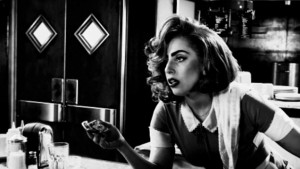 NAUGHTY LIST (in alphabetical order)::
NAUGHTY LIST (in alphabetical order)::
1.) Before I Go To Sleep: “Before I Go to Sleep,” the new Nicole Kidman movie, has a lot in common with the recent hit “Gone Girl.” Both star Academy Award winners, each feature a tall icy blonde actress in the lead role and are martial stories with an edge. The big difference between them? ”Gone Girl” is a hair-raising thriller and “Before I Go To Sleep” is not.
Based on the best-selling novel by S.J. Watson, it’s the story of Christine (Nicole Kidman), a traumatized woman who wakes up everyday with no memory. As she sleeps her mind erases itself, wiping away any new information. Her husband Ben (Colin Firth) has arranged their house as a tribute to their relationship—wedding pictures and mementoes from their life together decorate the walls—to help give her a sense of time, place and security. A neuropsychologist (Mark Strong) is secretly working with her to reassemble the shards of her memory, but as her synapsis start firing she begins to question everything about her life.
It’s the stuff of a solid thriller. “Memento,” “The Bourne Identity” and “Spellbound” have all masterfully mined similar material with more success. Director Rowan Joffe has made a stylish looking movie but allows it to get bogged down by repetition and too-tame performances. It’s a shame because the twist—and you know there has to be a twist—works well enough and there are a few tense moments in the climax but the preposterous denouement wipes away any good will the film’s exciting-ish apogee offered.
2.) I, Frankenstein: An unholy mix of religion, martial arts (Adam has some slick Bruce Lee moves) and Mary Shelley, “I, Frankenstein” should have been called “Aye, yi, yi, Frankenstein.”
There is some cool gothic Gargoyle imagery on display and a variety of posh English accents to class to the joint, but it seems only Nighy realizes that this would have played better as a campy comedy.
In amongst the over earing narration, dropped storylines—for instance, a bride for Adam is mentioned and then never mentioned again—and shots of Adam peering around corners, every now and again someone will say, “I think your boss is a demon prince.”
Mel Brooks would have known how to stage that line. For all its atmosphere—i.e.: darkly shot scenes—“I, Frankenstein” would have been a lot more fun if it embraced its silly side just as Adam must embrace his humanity. With humanity comes a sense of humor, right? Not in this case. The movie plays like a satire of bad horror movies that forgot it was a satire.
3.) Left Behind: “Left Behind” stars Nicolas Cage and sets much of the action on board a plane, but make no mistake, this isn’t “Con Air.” Instead of raising hell, Cage is playing it pious in a remake of a Kirk Cameron movie about the rapture.
Based on a popular book series about the rapture by Tim LaHaye and Jerry B. Jenkins, “Left Behind” is a mainstream reboot of a successful string of Christian movies. Directed by Vic Armstrong, the legendary stunt man best known for the “Indiana Jones” movies, the new “Left Behind” has a distinct b-movie feel, with flimsy sets and bad dialogue (“Either I’m going crazy or the whole world is insane!”) but it does feature something rather remarkable—a subdued performance from Cage. Lately he’s been a practitioner of something he calls Nouveau Shamanic school of acting but here he has dialed it way down perhaps out of respect to the religious nature of the material, or perhaps he’s saving the wild stuff for “Con Air 2: This Time it’s Biblical.”
4.) The Nut Job: “The Nut Job” is an original story that feels Frankensteined together from other, better kid’s movies. Echoes of “Ice Age” style slapstick and “Ratatouille” situations and even “Animal Farm” ethos reverberate throughout. I’ll give the filmmakers credit for adding in the gangster twist and some jazzy music but it’s the characters themselves that really disappoint.
To give you an idea of the amount of thought put into the characters, let’s start with their names. Neeson’s raccoon character is inventively named Raccoon, the rat sidekick is Buddy (Robert Tinkler) and the surly squirrel is, of course, called Surly.
Different names wouldn’t have made this a better movie, but the literal names display a lack of inventiveness that permeates the entire film. The animation is fine, but the rest—the story, the voice work, the action—feels as uninspired as peanut butter without jam.
There is very little joy, almond or otherwise, in “The Nut Job.”
5.) Night at the Museum: Secret of the Tomb: Unless the movie is called “Planet of the Apes” its faint praise to say the monkey is the best thing about a picture. Such is the case with “Night at the Museum: Secret of the Tomb,” the third outing in the popular Ben Stiller kid’s franchise. Crystal the Monkey as Dexter a Capuchin monkey, gets the most laughs and is the only member of the top-of-the-line cast who doesn’t feel like they’re only in it for the big holiday movie paycheque.
“Night at the Museum: Secret of the Tomb” beats the original premise into submission, blowing up the idea of a secret nightlife at the museum into the best example this year of how franchise filmmaking can go horribly wrong. Like the dimming tablet that slows down the wax exhibits, this movie sucks the life out of once interesting characters, placing them in a plot that is essentially an excuse to showcase more characters (like Dan Stevens as Sir Lancelot and a surprising and rather charming cameo from a very big star) and bigger special effects than in parts one and two.
6.) Sex Tape: Any movie with the word sex in the title and Cameron Diaz in her underwear and a newly slim Jason Segel in the all-together should be a lot sexier than “Sex Tape” is. The first twenty minutes plays more like an attempt to break the world record for using the word “sex” in a movie than an actual story. They talk about sex, have sex, then talk about it some more, but rather than being racy or slap-your-thigh funny it becomes tiresome. The only word used more often is “iPad,” which is even less provocative.
At one point in the film Diaz talks about her love of porn, but adds she doesn’t watch it anymore because, “the quality of the writing has gone down hill. I like it when they really feel like they’re in love.” She might have been talking about her own movie.
7.) Sin City: A Dame to Kill For: “Sin City” A Dame to Kill For” feels like it was made by someone with an eye for the aesthetics of noir but the interests of a 14-year-old boy. It’s an exercise in style over substance that will make your corneas tingle, tickle your prurient side and provide an experience that may be memorable (especially if you are a fourteen year boy) but not particularly rewarding.
These unendingly grim crime stories aren’t so much hard-boiled as they are over-baked. Rodrigues and Miller’s outlook is as bleak as the stark black-and-white palette they use to illustrate the movie. “Death is just like life in Sin City,” they say, hammering the point home that the only relief from the ennui many of these characters live with is a bullet to the head. The characters seem to welcome it. “He’ll eat you alive,” a bartender tells Johnny about the senator. “I’m a tough chew,” he replies, playing chicken with his life.
The directors try to distract from the cynical goings on with hyper-German Expressionist cinematography and Eva Green’s wardrobe, or lack thereof, but no matter how much style or skin are exposed, “Sin City: A Dame to Kill For” remains a slickly styled exercise in pointlessness.
8.) Tammy: The last time Susan Sarandon went on a cinematic road trip she was teamed with Geena Davis in a film that reinvented the buddy picture and earned praise from critics who called it a “neo-feminist road movie.”
This time out the Sarandon shares the front seat with Melissa McCarthy. Where “Thelma & Louise” learned about loyalty and sisterhood, Tammy and Pearl only pick up tips about drinking and driving, how to rob restaurants and how to destroy a jet ski.
Road movies are episodic by nature. Their stories move from place to place, from character to character, all bound by a theme. Unfortunately “Tammy” simply moves slowly from scene to scene, content to rely on McCarthy’s comedic appeal at the sacrifice of anything more than pratfalls and awkward humor.
In other words “Tammy” earns a laugh or two when McCarthy falls down, less so when she is standing upright, which is most of the movie.
9.) Transcendence: “Transcendence” asks some interesting questions. Can technology provide some sort of life after death? Does artificial intelligence offer more promise or peril? How much humanity can a computer program possess? Is “Her” a better movie about love in the computer age?
The questions are interesting and might have been thought provoking if “Transcendence” was a better movie. Director Wally Pfister (best known as Christopher Nolan’s DOP of choice) and screenwriter Jack Paglen tackle big questions head on, but in the most perplexing of ways. Weird tonal shifts from sci fi to cyber love to techno terrorism make for a drearily paced film. Add to that unclear character motivations—MILD SPOILER ALERT: exactly who’s side is Max on?—and an underdeveloped love story and you’re left with a film that brims with promise but underwhelms.
So too does Johnny Depp. You have to cut him some slack because for 90% of the film he only appears on computer screens, doing his best HAL impression, but he seems to have checked out long before his character does. Hall and Bettany do some soulful work, but are hampered by a love story that is more about code than contact.
“Transcendence” has style, and it should, Pfister (who used DOP Jess Hall on this film) is a gifted shooter who gave us one of my favorite shots of recent years—The Joker hanging out of the cop car in “The Dark Knight,” surrounded by blurred lights and city scape. Given the choice I’d choose to watch that thirty seconds again and again over spending one more minute in the lackluster world of “Transcendence.”
10.) Winter’s Tale: What is meant to be an uplifting experience about the power of love and the triumph of good over evil felt more like being strapped to a chair and force-fed all nine seasons of “Touched by an Angel.”
Based on the best-selling novel of the same name by Mark Helprin and brought to the screen by Oscar winning writer-turned-director Akiva Goldsman the story begins when Peter Lake (Colin Farrell), a turn-of-the-last century burglar, comes across the love of his life while robbing a mansion he thought was empty.
Beverly Penn (Downton Abbey’s Jessica Brown Findlay) the beautiful-but-doomed daughter of a wealthy newspaper tycoon, is a precocious and philosophical young woman with just months to live. He wants to save her, but first he must save himself from demonic crime lord Pearly Soames (Russell Crowe), a brutal man who wants Lake dead. Then, in a twist suggested by the Brothers Grimm, he finds himself thrust one hundred years into the future with only the faded memory of Beverly and a white guardian angel horse as company.
As silly as the movie is, and make no mistake, this is what I like to call an S.D.M.—Silly Damn Movie—Farrell and Findlay manage to bring the romantic side of the tale alive. Their first meeting, over a cup of tea, is simple, effective and bristles with sexual tension. The love story, although a bit starry-eyed, works until the magic realism takes over and the story becomes loopier and loopier. By the time the words, “Is it possible to love someone so much they can’t die?” spill from Farrell’s lips all is lost, and that’s not even an hour into the story.
Putting aside the enchanted horses and dime store spirituality for a moment, the story often requires leaps of faith that would have even terrified Evel Knievel. This is the kind of movie where mothers willingly hand over their sick children to scruffy looking strangers on the promise of a miracle. It’s the kind of movie where people accept outlandish events with a tossed off phrase like, “How’s that even possible?” It’s the kind of sloppily plotted movie that involves a level of suspension of disbelieve so off-the-charts it’s almost in outer space.
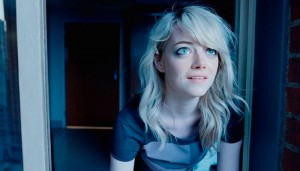 NICE LIST (in alphabetical order):
NICE LIST (in alphabetical order):
1.) Birdman: Every now and again a movie comes along that is so artfully weird, so unconventional in its approach and ethos, that it defies description and earns a recommend even though it isn’t completely successful in reaching its loft goals. “Birdman or (The Unexpected Virtue of Ignorance),” the new film from “Babel” director Alejandro González Iñárritu, is that movie.
In what may be the most meta casting coup of the year Michael Keaton plays Riggan Thomson, a former movie star whose fame floundered when he left the “Birdman” franchise of super hero movies. Twenty years later with his money running out, he makes a comeback bid in the form of a Broadway show based on a Raymond Carver novel. Surrounded by family—daughter Sam (Emma Stone)—friends—BFF Brandon (Zach Galifianakis)—intense actors—played by Edward Norton, Andrea Riseborough and Naomi Watts—and a nasty theatre critic (Lindsay Duncan) who resents movie star Riggins for taking up space in a theatre that could have been used for art, he fights to reestablish himself as a serious actor.
“Birdman” could have been a stunt film. The casting of “Batman” star Keaton as a washed up former superhero is inspired but mostly because he hands in a performance that rides the line between comedic and pathos. “I’m the answer to a Trivial Pursuit question,” he says.
It doesn’t feel like stunt casting because Keaton plays the truth of the situation and not just the situation. His Riggins is obnoxious, self-absorbed and yet earnest in his desire to create great art. Keaton plays it all, wallowing in a stew of self-pity—he says he looks like “a turkey with leukemia.”—and ego while never once trying to appeal to the audience’s good graces. It’s a bravura performance that is the beating heart of this strange beast.
2.) Boyhood: Director Richard Linklater’s twelve-years-in-the-making, coming of age story “Boyhood,” is more than a slice of life. It’s slices of lives anchored by one character, Mason, played by Ellar Coltrane, who was six when filming began, eighteen when the movie wrapped.
When “Boyhood” begins with Mason and his sister Samantha (Lorelei Linklater) are being raised by their mom (Patricia Arquette). Their father (Ethan Hawke) is a sporadic presence, an absentee dad who’s trying to do better. Mason is an introverted, artistic boy, Samantha an extrovert who rolls her eyes and hates the clothes her mother chooses for her.
To tell more would do the movie a disservice because the extraordinary thing about this movie isn’t the story, it’s the performances and the scope. The story of a single mother coping with bad relationship choices as she tries to better her life and the lives of her kids isn’t particularly new.
Here it is the execution that counts.
Linklater’s decade long shoot is more than just a gimmick, it’s a technique that sucks the viewer in, much in the same way home movies, viewed many years later, can evoke deeply held feelings. Watching these characters grow up on screen, literally, brings an authenticity to the film and the story, almost like a documentary. “56 Up,” in which director Michael Apted revisits the same group of British-born adults every seven years, is similar, but “Boyhood” feels different. The narrative construct of watching the character Mason grow up on screen is one thing, but on a larger scale we’re also watching Coltrane mature and that’s what makes this movie special.
3.) Gone Girl: “Gone Girl” is about many things. It’s about the perfect crime. It’s about the disintegration of a marriage. It’s about the mob mentality that shows like Nancy Grace creates when “innocent until proven guilty” becomes a meaningless catchphrase. Heck, it’s even about proving Tyler Perry actually can act but mostly its about keeping the audience perched on the edge of their collective seats.
When Amy (Rosamund Pike) and Nick (Ben Affleck) first meet both are writers living in New York City. It’s love at first sight. “We’re so cute I want to punch us in the face,” she says. but after a few years of marriage, a recession and a downsizing from Manhattan to Missouri, things go sour. On the morning of their seventh anniversary Amy disappears, leaving behind only an over turned coffee table and a smear of blood in the kitchen. In the coming days Nick’s life is turned upside down. “It’s like I’m on a Law and Order episode,” he says. His wife is gone, her over protective parents are on the scene and he is suspect number one.
Director David Fincher has constructed an intricate, he-said-she-said thriller, based on a bestseller of the same name by Gillian Flynn, that relies on the element of surprise.
Ben Affleck is a bright light but Pike burns a hole in the screen. The former Bond girl and “An Education” star has never been better. Cold and calculating, terrified and terrifying, she puts the femme in fatale. A star in the Brian DePalma mode, she’s capable of almost anything except being ignored. It’s a bravura performance and one that will garner attention come Oscar time.
“Gone Girl” is not great art, but it is an artfully made potboiler with memorable performances and slick direction that will keep you guessing until the end.
4.) The Grand Budapest Hotel: In keeping with Anderson’s style, the story of Gustave H and the hotel is rich with nuance and detail but never feels overwhelming or tiresome. It’s a wittily whimsical story that feels transported in from a bygone era. It’s funny and elegant, feeling like a throwback to the Ealing Comedies complete with social commentary, farce and laugh-out-loud situational comedy.
At its twee little heart is Ralph Fiennes in a strangely mannered performance that not only provides many of the film’s best moments—his Benny Hill style escape from the police is hysterical—but also it’s heart.
Like the movie itself, the performance is original, unexpected and oddly affecting.
With “The Grand Budapest Hotel” Wes Anderson has found a balance between his highly stylized artistic vision, story and heart.
5.) Guardians of the Galaxy: “Guardians of the Galaxy” has a playful tone. From Pratt’s signature line, “Peter Quill, people call me Star-Lord,” to a soundtrack stuffed with 70s era pop music—like “Hooked On A Feeling” by Blue Swede and Rupert Holmes’s “Escape (The Piña Colada Song)”—and actors in blue-headed alien masks, the movie feels like a throwback to old-school action-adventure.
It’s filled with one-liners, sight gags and funny moments that play off the more standard blockbuster-style action and battle scenes. Pratt has an offhand delivery that recalls Harrison Ford in Han Solo mode, Cooper does wisecracks like a skilled Catskills comic and (ALMOST A SPOILER) there’s Baby Groot to up the cute factor. They supply the light moments, but despite Cooper’s presence, this isn’t “The Hangover” in space, it’s an all out action movie with a blithe spirit.
6.) The Lego Movie: “The Lego Movie” is possibly the weirdest, most psychedelic kid’s entertainment since “H.R. Pufnstuf.”
Released by a big corporation—Warner Bros—and based on one of the world’s most popular toys, it manages to feel as though a kid who threw away his Lego kit’s instructions and snapped the blocks together in random, fun ways made it.
The first thing you notice about “The Lego Movie” is the look. It’s computer-animated but looks like stop-motion. The film’s handmade composition isn’t slick, but it is playful, which is a perfect compliment to its Lego origins. (It should be noted, however, that the movie in no way plays like a commercial for the toys.) From the crude Lego flames to the awkward way the characters move, the movie is completely consistent in its vision of a Lego world.
The second thing you’ll notice is how off the wall the story is. It’s not just off-the-wall, it’s off-the-planet. Directors and co-writers Phil Lord and Christopher Miller have taken the movie’s credo of battling against conformity to heart and made a big budget studio movie that bends all the rules. At its heart it’s a simple hero journey, a primal story about good against evil, but frenetic storytelling and inventive twists in almost every scene add a richness that belies its humble toy story origins.
7.) Nightcrawler: The old maxim “If it bleeds it leads” has been heard at least once in every newsroom the world over. The more sensational the story, the better placement it will receive in the newspaper or on the nightly news. “Nightcrawler,” a new movie starring Jake Gyllenhaal, takes it one step further.
The news director of KWLA, Los Angeles’s lowest rated morning news show wants more than just blood. What leads on her broadcast? “A screaming woman running down the street with her throat cut.”
Gyllenhaal is Lou Bloom, a slick talking drifter who falls into the freelance news gathering business after he overhears a stringer negotiate a fee for some ENG footage. He has the chutzpa and talent to get lurid footage of crashes, fires or murders no one else can…. or will. He violates crime scenes to get “first look” footage and isn’t above sabotaging the competition. “If you’re seeing me,” he says, “you’re having the worst day of your life.”
His sole client is Nina (Rene Russo), news director of the “vampire shift” at KWLA. His sensational footage is giving the station a much needed ratings bump, but soon Lou is revealed to be a compulsive manipulator who will not let anyone or anything get in the way of his success.
The name “Nightcrawler” and the October 31 release date suggests that this is a horror movie, conjuring up images of vampires and other nocturnal creeps, but this isn’t a traditional horror film. Instead it’s about the horror of a greedy sociopath and the ripple effects of his behavior.
Lou is a ruthless predator, a high school dropout who speaks in platitudes—“A friend is a gift you buy yourself.”—but isn’t above using violence to get what he wants. He’s bent on success at any price and regards one bloody car crash victim not as a person, but as “a sale.” Gyllenhaal dives in with both feet, delivering a terrific performance that fills the space vacated by Gyllenhaal’s vanity with tension, menace and charisma. When he says, “What if my problem wasn’t that I don’t understand people but that I don’t like them?” he proves to be remarkably self aware, embracing his bad behavior and being well rewarded for it by Nina.
8.) Snowpiercer: Based on the French graphic novel “Le Transperceneige,” “Snowpiercer” is the nerviest actioner to come along in a season crowded with movies that go crash, boom, bang. It’s an environmental thriller—if you haven’t already seen Joon-ho Bong’s “The Host” do so now!—that is unapologetically weird, keeping the audience off balance for the entirety of its two-hour running time.
Tilda Swinton as the train’s Iron Lady, the minister of discipline, plays like a cross between a prison guard, Benny Hill and Margaret Thatcher. It’s a loopy performance that embraces and embodies the movie’s weird spirit.
In the world Bong creates surprises are around every corner, characters come and go, but it never feels odd for odd’s sake. The story rips along like a rocket (or thousand car train, if you like), sometimes in several directions at once, but Bong controls the chaos, keeping the story plausible (OK, plausible-ish) and above all, entertaining.
9.) Top Five: In “Top Five” comedic superstar Andre Allen (Chris Rock) faces a problem that has bedeviled many of his real life counterparts. “I don’t feel like being funny anymore,” he says, but will his audience be ready for his new, serious side?
Allen is at a make or break point in his career. After years of making popular comedies featuring a cop in a bear suit, his latest film, “Uprize,” is a serious drama about the slave revolt in Haiti and if it flops his agent (Kevin Hart) says, “we’re talking ‘Dancing With the Stars.’” Before he jets off to London to marry his reality star girlfriend (Gabrielle Union) he does the promotional circuit, including spending a day with New York Times reporter Chelsea Brown (Rosario Dawson). In the course of doing an in-depth profile on the actor Chelsea uncovers some uncomfortable truths about Allen and herself.
The top five things to know about “Top Five” is that it works as a comedy, as a romance, as a look at creative fulfillment, as a showcase for Chris Rock’s comedian friends and as a portrait of fame in the modern age. Rock, who also writes and directs, is firing on all cylinders in a personal film that crackles with energy and NSFW humour.
Rock and Dawson spark in long, uncut scenes of dialogue that echo “Before Midnight.” Flirting and sparring throughout the film, they are at the heart of the story but Rock has populated the movie with other interesting characters and cameos.
10.) Whiplash: “Whiplash” sees Andrew Neyman (Miles Teller) work toward his dream of becoming the best jazz drummer of all time. Taken under Fletcher’s wing, he is given a spot as an alternate in the school’s prestigious studio band. His job is to observe and turn pages of sheet music for the ensemble’s regular drummer but from the first day Fletcher seems to be by turns goading and encouraging Andrew, building him up only to tear him down. “Were you rushing or were you dragging? If you deliberately sabotage my band, I will gut you like a pig.” In an effort to impress his hardnosed teacher Andrew practices until his hands bleed, covering his cymbals in a fine mist of blood. But it may not be enough, and though Andrew has given his life to his studies, even dumping his girlfriend (Melissa Benoist) so she won’t be a distraction, he still might not have what it takes to be one of the greats in Fletcher’s eyes.
“Whiplash” is part musical—the big band jazz numbers are exhilarating—and part psychological study of the tense dynamics between mentor and protégée in the pursuit of excellence. The pair is a match made in hell. Fletcher is a vain, driven man given to throwing chairs at his students if they dare hit a wring note. He’s an exacting hardliner who teaches by humiliation and fear. “There are,” he says, “no two words in the English language more harmful than good job.”
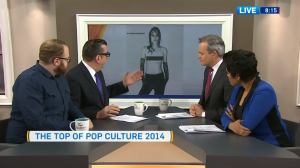 Canada AM: The most bizarre and buzzworthy pop culture moments of 2014 with Richard, Marci Ien, Graham Richardson and Jon Dekel. They chat about Kim Kardashian’s Paper magazine cover trying to break the internet, the Solange Knowles fight with Jay Z captured on a security camera, Ellen’s Oscar selfie, and Shia LeBeouff’s “I’m not Famous Anymore” stunt.
Canada AM: The most bizarre and buzzworthy pop culture moments of 2014 with Richard, Marci Ien, Graham Richardson and Jon Dekel. They chat about Kim Kardashian’s Paper magazine cover trying to break the internet, the Solange Knowles fight with Jay Z captured on a security camera, Ellen’s Oscar selfie, and Shia LeBeouff’s “I’m not Famous Anymore” stunt.
Watch the whole thing HERE!
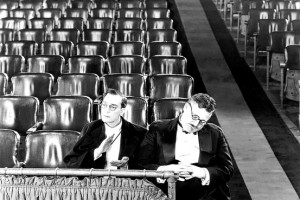 Read Richard quoted in a recent Canadian Press article by Victoria Ahearn!
Read Richard quoted in a recent Canadian Press article by Victoria Ahearn!
“Do critics still have the same kind of clout that they once did? I don’t think so, and it’s strictly because I think it’s been democratized,” says Crouse, a journalist, author and radio host.
“There is so much noise out there right now in terms of the amount of words that are written about films, unlike 30, 40 years ago when there were a handful of people that you could build a relationship with, you could trust. Even if you disagreed with them, you went and read them and you went on your way and you took their advice. Now I think it’s much different. I think that people skim through the blogs and Twitter and everything else and make up their own minds there, by and large, and look at star ratings.” Read the whole thing HERE!
This year a Christmas cinema miracle happened. “The Interview,” a Seth Rogen comedy materialized on screens big and small, despite hacker’s attempts to silence the movie. Chants of “Freedom” rang out across the land as the faithful lined up for their chance to see Rogen and James Franco exercise their right of free speech and make bad jokes.
Rogen and Franco play TV host Dave Skylark and producer Aaron Rapaport of the celebrity gossip talk show Skylark Tonight. Skylark is a smarmier version of Barbara Walters, a talk show host who trades in getting personal scoops form his guests. 1000 episodes in Eminem comes out of the closet on the show—”I’ve been playing gay peek-a-boo for years,” he says. “I’ve pretty much been leaving a gay bread crumb trail.”—but despite stratospheric ratings Rapaport doesn’t feel he is being taken seriously as a journalist. “I want to cover actual news,” he says, “not Nicki Minaj’s vagina flopping out at the Grammys.” When he learns North Korea’s Supreme Leader Kim Jong-un (Randall Park) is a fan of the show and wants to be interviewed by Dave, Aaron leaps at the chance to go to Pyongyang.
What begins as a chance at journalistic credibility soon turns into an assignment of a different sport when CIA Agent Lacey (Lizzy Caplan) recruits them to “take him out.” “Like for drinks? For kimchi? Take him out on the town?” Their job is to assassinate Kim with a special poison gadget hidden in their palms. Trouble is, when they touch down in Pyongyang Skylark becomes seduced by Kim’s charm. Convinced he is simply misunderstood and not evil, the dimwitted TV host has second thoughts about completing the mission. “He’s not evil, he was born into a bad situation.”
At a private dinner Dave discovers Kim’s truly dark side and, working with Aaron and propaganda minister Sook (Diana Bang), bring their visit to North Korea to a wild, bloody conclusion.
“The Interview” isn’t nearly as bad as some of the twitterati suggest—“I thought I’d never laugh again,” wrote one tweeter—or as subversive as others would like it to be.
The first twenty minutes has some genuinely funny moments, most fuelled by the Abbott and Costello-style bromantic chemistry between Rogen and the arrogantly idiotic Franco. The set-up earns some giggles at the expense of the media and celebrity journalists—an easy and deserving target—and the audacious nature of the film’s premise. Once the scenery changes from Hollywood to the hermit kingdom, however, the laughs become as rare as Angelina Jolie compliments in leaked Sony e-mails.
Still, there are some funny lines. “That tank was a gift to my father from Stalin,” says Kim. “In my country it’s pronounced Stallone,” replies the oblivious Dave. It’s not Noel Coward, but it’s a nice window into the chat show host’s tiny little world.
The rest of the movie, while intermittently entertaining, isn’t nearly as sharp. In fact it is a blunt instrument that spends 152 minutes (about ¢6 a minute if you rent the download) hammering the audience over the head with poop and rectum jokes. More actual satire and less hiding-things-in-Rogen’s-bum might have made watching the film act of political activism or even an exercise in freedom of speech, but as it is “The Interview” is a buddy comedy and not a declaration of war.
 See Richard, along with Victor Garber, the cast of Corner Gas: The Movie, Martin Short, Rex Harrington, Bruce Cockburn, Meesha Brueggergosman, Gordon Pinsent and more recite “‘Twas the Night Before Christmas!” Watch the whole thing HERE!
See Richard, along with Victor Garber, the cast of Corner Gas: The Movie, Martin Short, Rex Harrington, Bruce Cockburn, Meesha Brueggergosman, Gordon Pinsent and more recite “‘Twas the Night Before Christmas!” Watch the whole thing HERE!
 Unique traditions: How Canada AM regulars spend the holidays.
Unique traditions: How Canada AM regulars spend the holidays.Watch the whole thing HERE!
Have you ever heard the saying, “Be careful what you wish for because you just might get it”? It’s a fitting maxim for the new Disneyfied version of Stephen Sondheim’s musical “Into the Woods.” Of course, it is one of the themes of the show, but on another level, for the people who have long hoped to see a screen adaptation of the legendary musical, it may not be a situation of wish fulfillment.
Fans of the stage show will notice a few liberties have been taken with the show’s book. The changes are slight—for instance, the prince does not sleep with the Baker’s Wife, although they do have an encounter—but purists may feel like their beanstalk has been shaken a bit too much.
Casual fans of big screen musical theatre, however, will find a handsomely mounted reworking of the popular show, filled with the stuff of fairy tales: beautiful princesses, handsome but dimwitted princes, witches and even a giant or two.
The story is broken into two halves, a sunnier and irreverent “Once Upon a Time” first half that introduces the Baker (James Corden) and his Wife (Emily Blunt), a couple unable to have children because of a Witch’s (Meryl Streep) curse. The old crone agrees to undo the spell if the pair supply her with four items, a cow as white as milk, a cape as red as blood; hair as yellow as corn and a slipper as pure as gold.
Their search takes them into the woods and in collision (and later in collusion) with Jack (Daniel Huttlestone), later of Beanstalk fame, Little Red Riding Hood (Lilla Crawford) after the Big Bad Wolf (Johnny Depp) has swallowed her whole, Rapunzel (Mackenzie Mauzy) and Cinderella (Anna Kendrick).
The second half, the darker side of the fairy tale world, begins where the happily ever after part usually sits. When a female giant comes to the woods looking for Jack, the boy who killed her husband, the story takes a turn, teaching a lesson about wish fulfillment and responsibility for our actions.
“Into the Woods” has more to do with the original Grimm Brother Fairy Tales—the ones where evil stepmothers sawed the toes off their daughters to fit into golden slippers—than anything Disney has ever attempted before. The stereotypes are all present and accounted for, but under the prince’s brocade jackets or the Witch’s wild mauve wig, are complex characters that veer from comedic to serious to poignant, often in the same scene.
The cast is comprised of actors who can sing, warbling to Sondheim’s rich score. Standouts include “Agony,” an amusing duet between the two princes (Billy Magnussen and Chris Pine) and the Witch’s swansong “Last Midnight.”
On the downside, it feels a bit overlong and the Big Bad Wolf scene could have been renamed the Huge Unctuous Wolf, given Depp’s oily interpretation of the character.
“Into the Woods” survives the script meddling through strong staging, good performances and sheer wish fulfillment to make end up at it’s own kind of happily ever after.